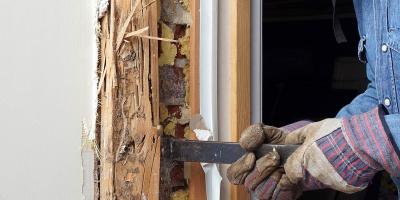Are Cats Enough to Keep Mice Out?

Cats love to chase mice, right? After all, there’s an entire genre of cartoons based on the very premise that not only do cats enjoy chasing mice, but they’re actually quite good at it. So, are they?
Some folks in New England swear by their feline pest controllers. In fact, on farms and other acreage, as well as regular suburban homes across the region, some cats are considered more functional than mere “pets.”
While it’s true that many cats do love the thrill of the chase -- and sometimes they might even catch the occasional mouse -- there’s a reason our pest control professionals don’t take cats with them out into the field.
The fact of the matter is, cats just aren’t very good at pest control.
It’s Honest Work, But…
Although it’s true that cats are natural predators in the wild, domesticated cats don’t, for the most part, develop their predatory talents the same as if they had to fend for food in nature. Since people feed domesticated cats, they’re not driven to hunt by hunger.
In urban areas, even stray cats tend to coexist with rodents, as both tap into the same source of nourishment -- human food waste. Stray cats can and do kill the occasional rat or mouse, just like house cats do, but scientific studies have consistently confirmed that cats don’t actually have an adverse effect on urban rodent populations.
Tracing the Problem to Its Source
Regardless of how tuned into its wild instincts your cat may or may not be, the far more important consideration is how rodents are getting into your home in the first place. Rats and mice are able to take advantage of incredibly small openings, so an untrained eye might not spot their entry points.
If a rodent can’t fit through a crack or gap in the exterior of your house, it has another tool at its disposal: its teeth. Mice and rats will gnaw their way in when squeezing doesn’t quite work and, once they do, they’re apt to leave a trail of pheromones alerting other rodents to the newly-constructed entryway. Before you know it, their friends will follow in search of food and shelter. In other words, the occasional mouse caught by Fluffy won’t fix the problem. But, a feline friend on the prowl can still prove helpful!
Cats Still Have a Job to Do
None of this is to say that your cat doesn’t still have an important job to do -- it does! Although it may not be particularly skilled at eradicating rodents from your property, cats can provide another very important service -- they can alert you to the presence of rodents.
Signs that you may have a rodent problem include rodent droppings, gnaw marks, foul odors, tracks and nests -- many of which can go undetected by humans for weeks or even months. If you have a cat on the prowl, however, it’s far more likely to notice one or more of those signs sooner than you ever will.
Cats or no cats, it’s important to embrace Integrated Pest Management (IPM) strategies for comprehensive and complete rodent control. And since IPM prioritizes prevention and focuses on key concepts like exclusion and sanitation, it is also the safest pest control option for pets and kids. Simply put, exclusion involves checking your property for those cracks and crevices that could be potential rodent entries into your home. Exclusion efforts to keep rodents out in the first place go a long way to supporting a rodent-free environment.
Sanitation, as it sounds, is about maintaining the cleanliness of your surroundings. Wipe up spills, sweep away crumbs and ensure that trash and recycling is stored in proper receptacles with tight-fitting lids. Properly storing pet food is also key, as rats will just as easily make a meal from Fido’s -- or Fluffy’s -- food supply.
Finally, whether you have cats or not, partnering with a pest control professional to regularly check your home for new potential entry points and evidence of infestation is an invaluable component to IPM in your home.
Keep the mice out of your home this winter. Click here for a free quote for effective rodent control services.



